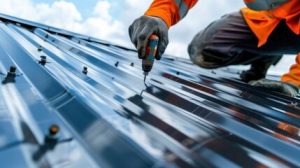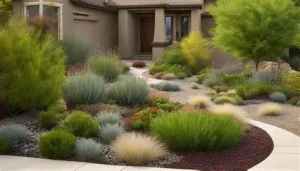A roof is more than a shelter; it is the first defense against nature’s elements. Over time, however, even the strongest roof can weaken due to weather, wear, or neglect. Roof repair is not just about patching leaks but about preserving the integrity and safety of the structure beneath. As materials and building techniques evolve, so too does the art and science of repairing roofs effectively.

The foundation of successful roof repair starts with understanding the cause of damage. While leaks are the most obvious symptom, they often result from deeper issues like structural shifting, poor ventilation, or hidden moisture buildup. Identifying the root cause is essential to prevent recurring problems. Modern roof inspections now rely on advanced tools that detect weaknesses invisible to the naked eye, ensuring repairs address the problem, not just the symptom.
Weather remains the most common enemy of a roof, gradually eroding protective layers and loosening fasteners. Heavy rain, snow, heat, and wind all contribute to deterioration in different ways. Skilled roofers analyze how these forces have affected materials before recommending solutions. This careful assessment ensures that each repair is tailored to the roof’s specific exposure and condition.
One of the most frequent issues involves damaged shingles or tiles, which can expose the underlying structure to water intrusion. Replacing these individually may seem simple, but matching the integrity and alignment of surrounding materials requires precision. Even a small misplacement can allow moisture to penetrate, leading to rot or mold over time. Professionals meticulously restore these sections to maintain both protection and visual uniformity.
Flashing, the thin metal used around vents, chimneys, and skylights, is another common weak point. Over time, it can loosen, corrode, or pull away, creating entry points for water. Repairing flashing requires both technical skill and attention to sealing techniques to ensure watertight protection. In many cases, upgrading flashing materials during repair significantly extends the roof’s lifespan.
Leaks around valleys and ridges often signal deeper structural issues. These areas bear the brunt of water flow, and even minor damage can cause extensive interior leaks. Repairing them involves reinforcing the underlayment, sealing seams, and sometimes redesigning drainage paths. Modern repair methods focus on improving water flow efficiency to prevent future failures.
Another overlooked aspect of roof repair is ventilation. Poor airflow can trap moisture inside the roof structure, accelerating decay and reducing energy efficiency. Technicians often incorporate ventilation adjustments as part of the repair process. This approach not only solves immediate problems but also enhances the overall performance of the roof.
Gutters and drainage systems also play a vital role in roof health. Clogged or damaged gutters can cause water to back up, seeping under shingles and causing rot. Repair services often include gutter cleaning, realignment, or replacement to ensure proper water flow. This comprehensive approach addresses the interconnected nature of roofing systems.
Modern repair techniques have expanded beyond traditional materials. Innovative membranes, reflective coatings, and self-healing sealants are now commonly used to improve durability and efficiency. These materials provide enhanced protection against UV rays, temperature fluctuations, and water penetration. Choosing the right combination of materials during repair can significantly increase a roof’s resistance to future damage.
In some cases, roof repair involves strengthening the underlying structure rather than just surface fixes. Prolonged exposure to moisture can weaken rafters or decking, requiring reinforcement or replacement. Professionals carefully assess the load-bearing capacity before undertaking repairs. This ensures the entire roof system remains stable and secure long after the surface has been restored.
Energy efficiency is another consideration that has transformed modern roof repair. Reflective coatings and insulation improvements are often integrated during repair to reduce heat absorption and improve indoor comfort. These upgrades not only extend the roof’s life but also lower energy costs. Repair has become an opportunity for improvement, not just restoration.
Emergency roof repair has also evolved into a specialized service. Rapid response teams equipped with temporary sealing solutions can prevent extensive interior damage after severe weather events. These temporary fixes buy time until permanent repairs can be completed safely. Such services are crucial for protecting property during unpredictable weather conditions.
Maintenance plays a pivotal role in reducing the need for extensive roof repairs. Regular inspections allow small issues to be caught early before they develop into costly damage. Many professionals now offer annual maintenance plans that include cleaning, sealing, and minor adjustments. This proactive approach helps homeowners save money and extend the life of their roofing systems.
Technology continues to redefine how roof inspections and repairs are conducted. Drones equipped with high-resolution cameras now provide detailed views of hard-to-reach areas without the need for extensive scaffolding. Infrared scanners detect trapped moisture beneath the surface, allowing for targeted repairs. These tools increase accuracy and efficiency, reducing both time and cost.
Safety has become a central focus of modern roof repair practices. Advanced harness systems, lightweight scaffolding, and robotic assistance reduce risks during high-elevation work. Repair teams receive extensive training to ensure safety standards are met on every project. This focus on safety benefits both workers and property owners alike.
Sustainability is another emerging priority in roof repair. Many services now incorporate recycled materials or eco-friendly coatings to minimize environmental impact. Repairs are designed not only to restore but also to reduce waste and promote long-term sustainability. These practices align with broader efforts to make construction more environmentally responsible.
Roof repair also involves a significant design element, especially for visible or historical structures. Professionals work to match materials, colors, and textures to preserve aesthetic integrity while upgrading performance. This balance of functionality and appearance is particularly important for older buildings with architectural significance. The goal is always to repair without compromising character.
The future of roof repair may include predictive maintenance powered by smart sensors. These devices, installed within roofing layers, can detect temperature changes, moisture, and structural movement in real time. Early detection allows for minor repairs long before visible damage occurs. Such advancements will transform roof repair from a reactive service to a proactive system.
Ultimately, roof repair is about more than fixing damage; it is about preserving safety, efficiency, and value. Every decision, from material selection to repair technique, plays a role in the long-term performance of the structure. The combination of traditional craftsmanship and cutting-edge technology continues to push the boundaries of what is possible. As buildings evolve, so too will the methods we use to protect them, ensuring that the shelter above remains strong, resilient, and dependable for decades to come.
